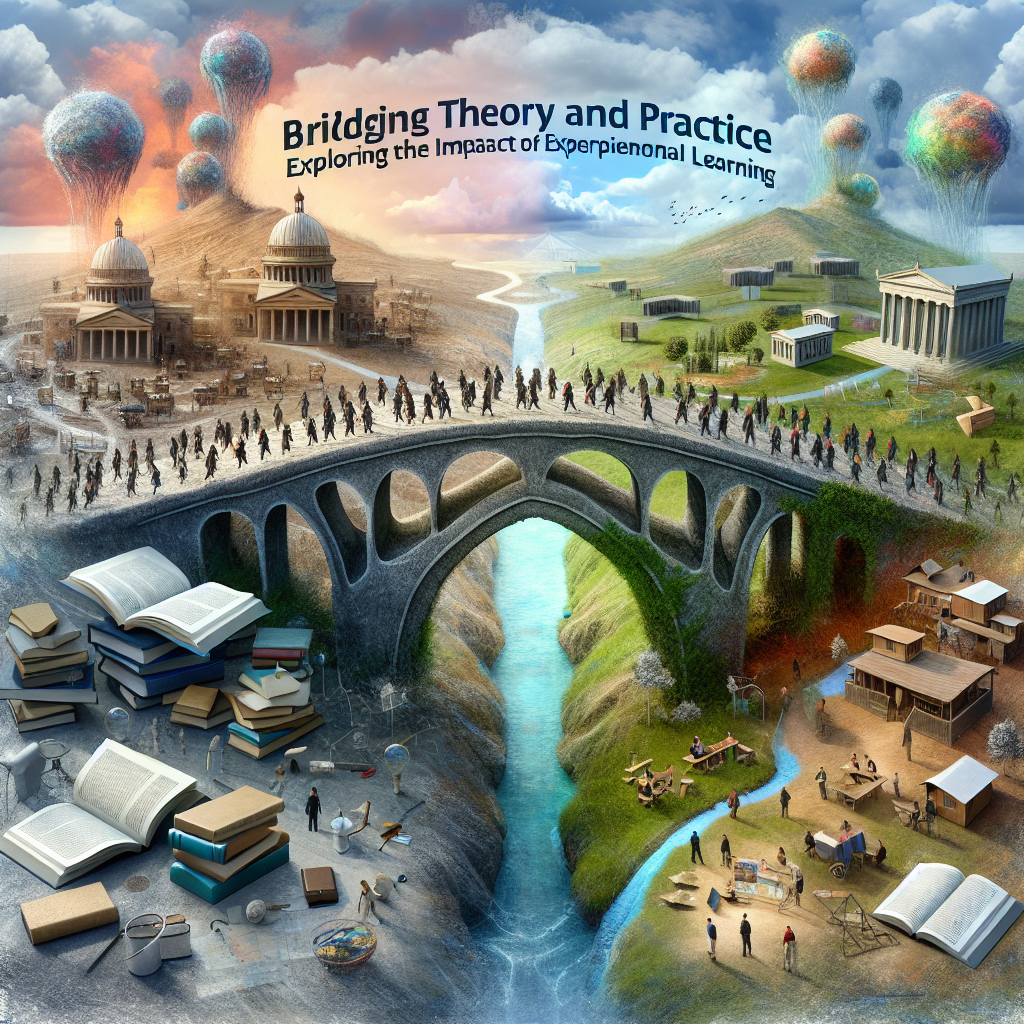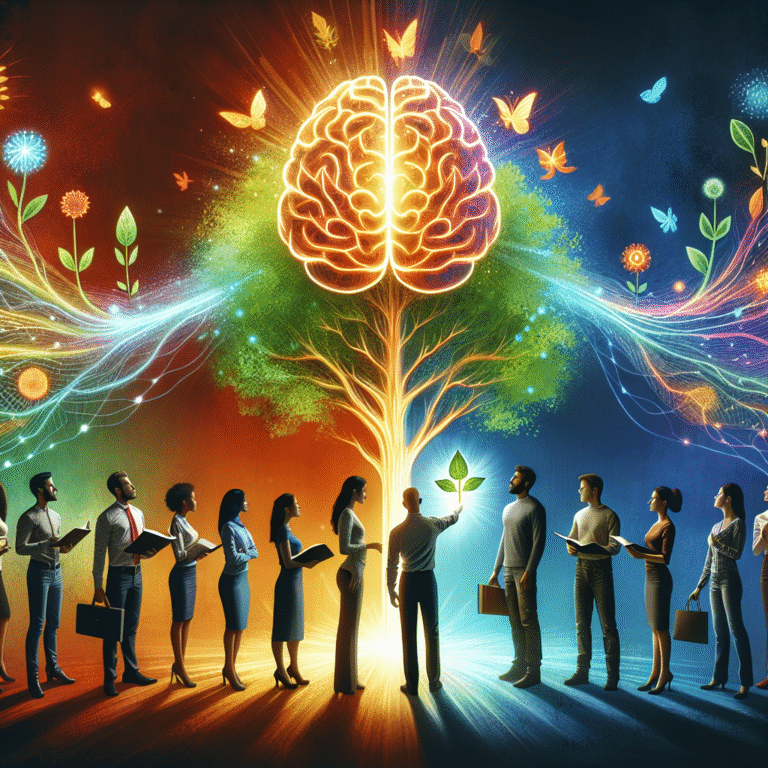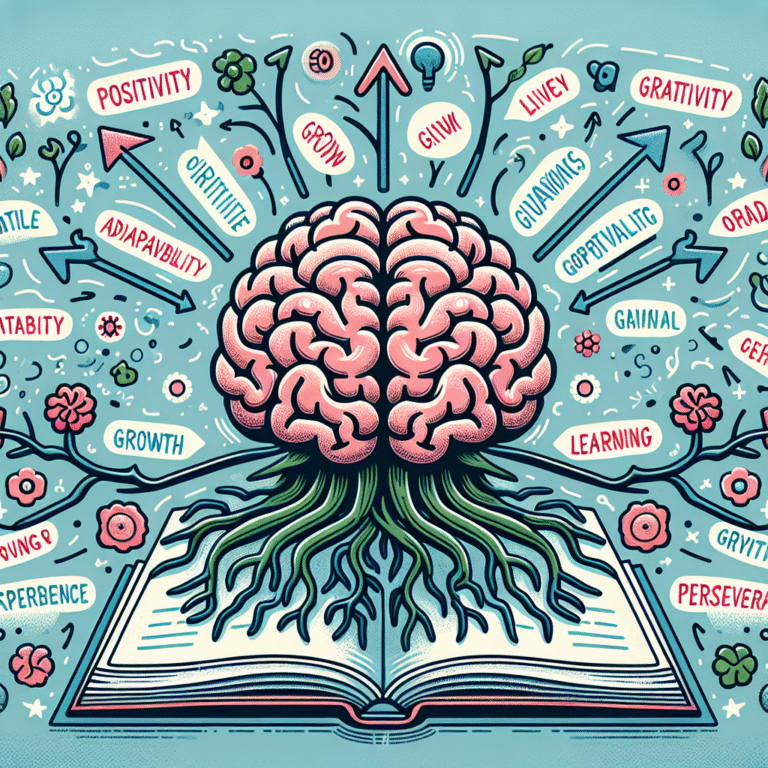
Introduction
In an ever-evolving world, driven by technological advancements and rapid shifts in job requirements, the education landscape must adapt to prepare individuals not just with theoretical knowledge but with practical skills. This intersection of knowledge and practice has led to a compelling approach called experiential learning. Bridging theory and practice through experiential learning offers a transformative experience that enhances not only academic understanding but also personal growth, critical thinking, and real-world problem-solving. But what does this really mean, and how does it impact learners across various contexts? This article will delve deeply into the significance of bridging theory and practice through experiential learning, exploring tangible impacts and integrating compelling case studies to illuminate this vital educational strategy.
Understanding Experiential Learning
What is Experiential Learning?
Experiential learning is a process where knowledge is created through the transformation of experience. Kolb’s Experiential Learning Cycle outlines four key phases: Concrete Experience, Reflective Observation, Abstract Conceptualization, and Active Experimentation. This cycle emphasizes the importance of not just experiencing but also reflecting on those experiences, conceptualizing them, and applying learned concepts actively.
Theoretical Foundations
The theoretical frameworks supporting experiential learning are rooted in several influential theories.
- John Dewey emphasized the role of experience in education, advocating for learning that engages individuals through active participation.
- David Kolb further developed this notion by outlining the learning cycle, highlighting the necessity of transitioning experience into knowledge.
These theories set the stage for modern educational practices that prioritize hands-on experiences alongside traditional learning methods.
Bridging Theory and Practice in Education
The Need for Experiential Learning
As industries evolve, employers seek individuals who can think critically, solve problems, and adapt to new situations. Bridging theory and practice through experiential learning cultivates these competencies. The traditional classroom model often fails to equip students with the necessary skills to thrive in ambiguous or dynamic environments.
Case Study: Harvard Business School’s Field-Based Learning
One striking example is Harvard Business School’s approach to case-based learning. Students engage with real-world business challenges, working in collaboration with companies to develop viable solutions. This methodology not only bridges the gap between theory and practice but also instills confidence and critical thinking skills among students.
Curriculum Integration
From Concept to Practice
Integrating experiential learning into curricula requires thoughtful planning. Courses should embed real-world projects, internships, and simulations that allow learners to apply theoretical frameworks in tangible settings.
- Internships: Students work within organizations to gain firsthand experience.
- Projects: Collaborative projects that address community or organizational needs.
- Simulations: Role-playing scenarios that mimic real-life situations.
These approaches create an environment where knowledge is contextualized, thereby enhancing retention and understanding.
Measuring the Impact of Experiential Learning
Quantitative and Qualitative Measures
To comprehend the full impact of bridging theory and practice through experiential learning, we need both quantitative and qualitative assessment methods.
Tables and Charts for Assessment
| Measure | Description | Impact |
|---|---|---|
| Engagement Level | Student participation in experiential projects | Higher engagement leads to improved outcomes |
| Skill Development | Assessment of skills before and after programs | Shows growth in practical skills |
| Career Readiness | Surveys of graduate employment rates | Indicates effectiveness in preparing students for the workforce |
Case Study: The Role of Internships in Career Outcomes
Research indicates that students who participated in internships gained a 15% higher employment rate than those who did not engage in experiential learning opportunities. This data underscores how bridging theory and practice not only enhances learning but also equips students for successful careers.
Challenges and Solutions
Barriers to Implementation
While the benefits of experiential learning are clear, numerous challenges can hinder its effectiveness:
- Resource Availability: Many institutions lack the necessary funding and partnerships to provide experiential opportunities.
- Faculty Training: Educators may not be equipped with the skills to facilitate experiential learning effectively.
- Assessment Difficulties: Measuring learning outcomes in experiential contexts can be challenging.
Overcoming Challenges
- Partnerships: Schools can build collaborations with local businesses and organizations to create hands-on opportunities.
- Professional Development: Offering workshops and training for faculty on experiential education practices can enhance teaching methods.
- Innovative Assessment Tools: Developing new assessment standards that align with experiential learning goals can provide clarity.
Real-World Applications Beyond Education
Experiential Learning in Professional Training
Experiential learning is not confined to academic settings; it extends into professional development and corporate training. Companies are adopting these methods to foster a culture of continuous learning and adaptation.
Case Study: Google’s Project Oxygen
Google’s initiative Project Oxygen utilized experiential learning principles to train managers. By focusing not just on theory but also on practical application and feedback, Google enhanced managerial effectiveness, showcasing how bridging theory and practice leads to measurable improvements in performance.
Conclusion
Bridging theory and practice through experiential learning is essential for preparing individuals to navigate today’s complex and dynamic world. The insights gained throughout this exploration highlight the profound impact experiential learning can have on enhancing knowledge retention, personal development, and career readiness.
The journey does not end here; educators, organizations, and learners themselves must continue to advocate for and implement experiential learning practices that inspire innovation and foster growth. By embracing this educational paradigm, we can build a framework that equips future generations with the tools needed to thrive.
FAQs
1. What is experiential learning?
Experiential learning is an educational approach that emphasizes learning through experience, facilitating the transformation of theoretical knowledge into practical skills.
2. How does experiential learning differ from traditional learning?
Traditional learning often focuses on theoretical knowledge without application, while experiential learning integrates real-world experiences that enhance understanding and skill development.
3. What are some examples of experiential learning?
Examples include internships, service learning projects, simulations, and case-based learning scenarios.
4. What benefits does experiential learning provide to students?
Experiential learning promotes engagement, improves retention of knowledge, fosters critical thinking, and better prepares students for their careers.
5. How can schools implement experiential learning effectively?
Schools can start by creating partnerships with local organizations, developing project-based learning initiatives, and providing training for educators on experiential teaching strategies.
By embracing the concept of bridging theory and practice through experiential learning, we can pave the way for a richer educational experience that not only prepares students for today’s challenges but also equips them to become the innovators of tomorrow.















